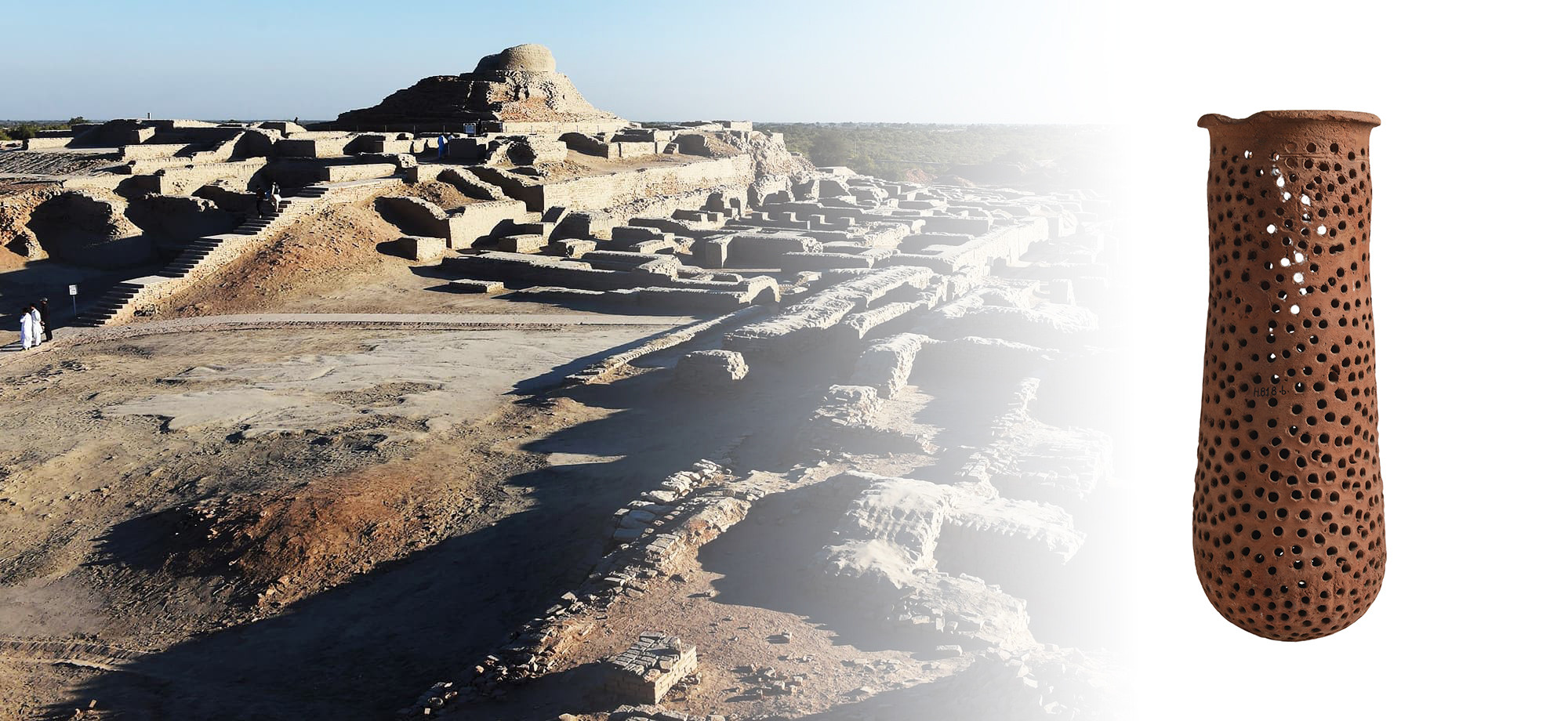by ARSHAD AWAN

A finely crafted jar offers a glimpse into the daily life & craftsmanship of the Indus Valley Civilisation
The Perforated Jar of Harappa is a remarkable artefact that offers insight into the cultural advancements of its time. A baffling yet fascinating discovery, it unveils another layer of mystery — this time related to an unusual aspect of diet culture. This terracotta jar, dating back to approximately 2500 BCE, was found in Harappa, Punjab, Pakistan. Measuring 15.9 cm in height and 6.9 cm in width, it is currently displayed at the National Museum in New Delhi, India.
The mouth of the perforated cylindrical jar is partially shattered, likely due to wear and tear over time. Its base is flat, with a single hole in the centre. Harappan pottery was predominantly made from fired clay, known for its durability and intricate designs. Typically adorned with black motifs over a vibrant crimson slip, these pottery pieces ranged from simple horizontal lines to complex geometric patterns, pictorial embellishments, and even perforations, showcasing the artistic and technical sophistication of the Harappan civilisation.
Dr. J.M. Kenoyer, one of the world’s foremost experts on the ancient Indus civilisation and Professor of Anthropology at the University of Wisconsin-Madison, has been excavating at Harappa since 1986. In his well-known book Ancient Cities of the Indus Valley Civilisation, he writes “this shape of perforated jar may have been used as a strainer at the end of a hollow straw, similar to those used in Mesopotamia for drilling beer from a large jar filled with some kind of mash. Larger perforated jars at Harappa and other sites were set inside jars, possibly for making beer or for processing milk to make cheese. Wheel thrown and holes punched through from the outside.”
Further research of Dr. Kenoyer suggests that the perforated cylindrical jar maybe wrapped in cloth and used as a strainer for the fermentation of liquids. “These vessels have been discovered with burial offerings in the Harappan cemetery, where they are vertically inside big open-mouthed vessels most likely filled with fermenting mash, most likely barley.” The many openings in the cloth on the outside would let the liquor strain through and gather in the central hollow space, then be expelled using long straws or a dipper.
While investigations of the sediments within these perforated vessels have not revealed the type of beverage being brewed, Dr. Kenoyer notes that continuous research of the porous pottery itself may recover some remnants of organic components to assist identify the contents of the jar.
Dr. Akshyeta Narayanan is currently a Gerald Averay Wainwright Postdoctoral Fellow (2023–2026) at the Faculty of Asian and Middle Eastern Studies, University of Oxford, though she is based at the McDonald Institute for Archaeological Research in Cambridge. Her research focuses on archaeological vessel use, foodways and exchange networks, with a particular interest in the subsistence strategies and interaction networks of the Indus Valley Civilisation. While analysing a larger sample of perforated jar fragments, she has found evidence suggesting that these jars may have served multiple purposes.
Kalyan Sekhar Chakraborty et. al, Department of Anthropology, University of Toronto, Mississauga, ON, Canada in the recent study on analysis of one fragmentary perforated jar suggests possible use for dairy processing.
The Express Tribune for more
